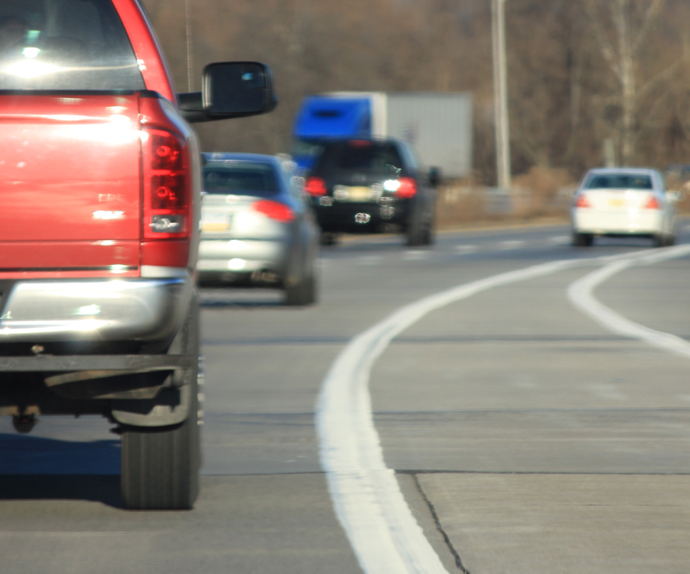Graduate student award-winning research documents road surfaces that quiet tire noise

At the race track, the roar of the engines is part of the attraction. But along a public road, most of the noise comes from tires on pavement, increasing 2.5 decibels for every 10 mph, and it is an environmental problem. Research by a student working with the Virginia Tech Transportation Institute has demonstrated that some road surfaces can actually reduce the noise.
“The use of alternative pavement surfaces has emerged as an innovative solution for mitigating traffic noise,” said Daniel Estuardo Mogrovejo Carrasco of Azogues, Ecuador, a graduate student in civil engineering at Virginia Tech.
Mogrovejo was a winner of the 2012 International Road Federation Student Essay Competition for his essay, Effect of Air Temperature and Vehicle Speed on Tire/Pavement Noise Measured with On-Board Sound Intensity Methodology, which was his master’s degree research.
Mogrovejo conducted his studies at the transportation institute’s Center for Sustainable Transportation Infrastructure. Measuring tire/pavement noise using on-board microphone probes as a research vehicle traveled along Rt. 460 near the Virginia Tech campus, at temperatures ranging from 40 to 90 degrees and at speeds of 35, 45, and 60 mph, he showed that speed increases the noise while an increase in air temperature decreases the noise. This research also field tested and proved the reliability of the on-board sound intensity method for measuring tire noise.
Next, he measured tire noise on five Virginia roads with different surface treatments. The project took him on the State Route 7 bypass in Leesburg, Rt. 119 west of Williamsburg, Rt. 288 near Chester, Rt. 76 in Richmond, and Interstate 64 in Virginia Beach. His results present two quiet concrete surfaces and three quiet asphalt surfaces.
The quietest concrete treatment is Next Generation Concrete Surface, as much as 5 decibels quieter compared with conventional diamond grind surfaces. The Next Generation product, which is the result of a sequential process of grinding and grooving, also improves lateral stability and reduces hydroplaning.
Asphalt quieting treatments are even quieter than the best concrete surface, but more variable. Porous surfaces are quieter and rubber-modified porous mixes average more than 3 decibels quieter than other asphalt surface treatments.
The research was presented at the annual meeting of the Transportation Research Board in January 2013 and has been published in issue 24 of the Spanish version of Corasfaltos magazine. Co-authors are Gerardo W. Flintsch, director of the Virginia Tech Transportation Institute's Center for Sustainable Transportation Infrastructure; Edgar D. de Leon Izeppi, senior research associate with the center; and Kevin M. McGhee, associate principal scientist with the Virginia Department of Transportation's Center for Transportation Innovation and Research.
The study was conducted in support of research led by the Virginia Center for Transportation Innovation and Research as part of the Virginia Quiet Pavement Implementation Program.
Mogrovejo received his Master of Science degree in December 2012. As a Ph.D. student, he is doing field testing and analysis for the Virginia Quiet Pavement Implementation Program’s five demo projects. The last phase of the research is how the quieting overlays will respond to winter maintenance.




